
How to Use ESP32: Examples, Pinouts, and Specs
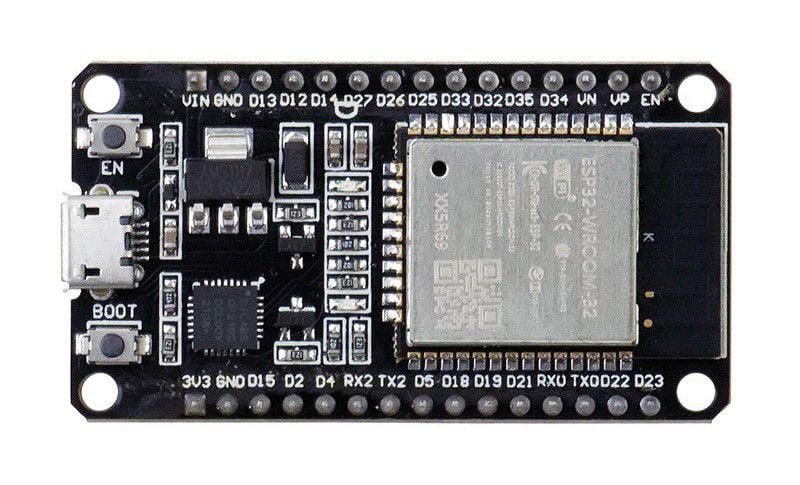
 Design with ESP32 in Cirkit Designer
Design with ESP32 in Cirkit DesignerIntroduction
The ESP32 is a low-cost, low-power system on a chip (SoC) developed by Espressif Systems. It features integrated Wi-Fi and Bluetooth capabilities, making it an ideal choice for Internet of Things (IoT) applications, smart devices, and embedded systems. The ESP32 is highly versatile, offering dual-core processing, a wide range of GPIO pins, and support for various communication protocols.
Explore Projects Built with ESP32
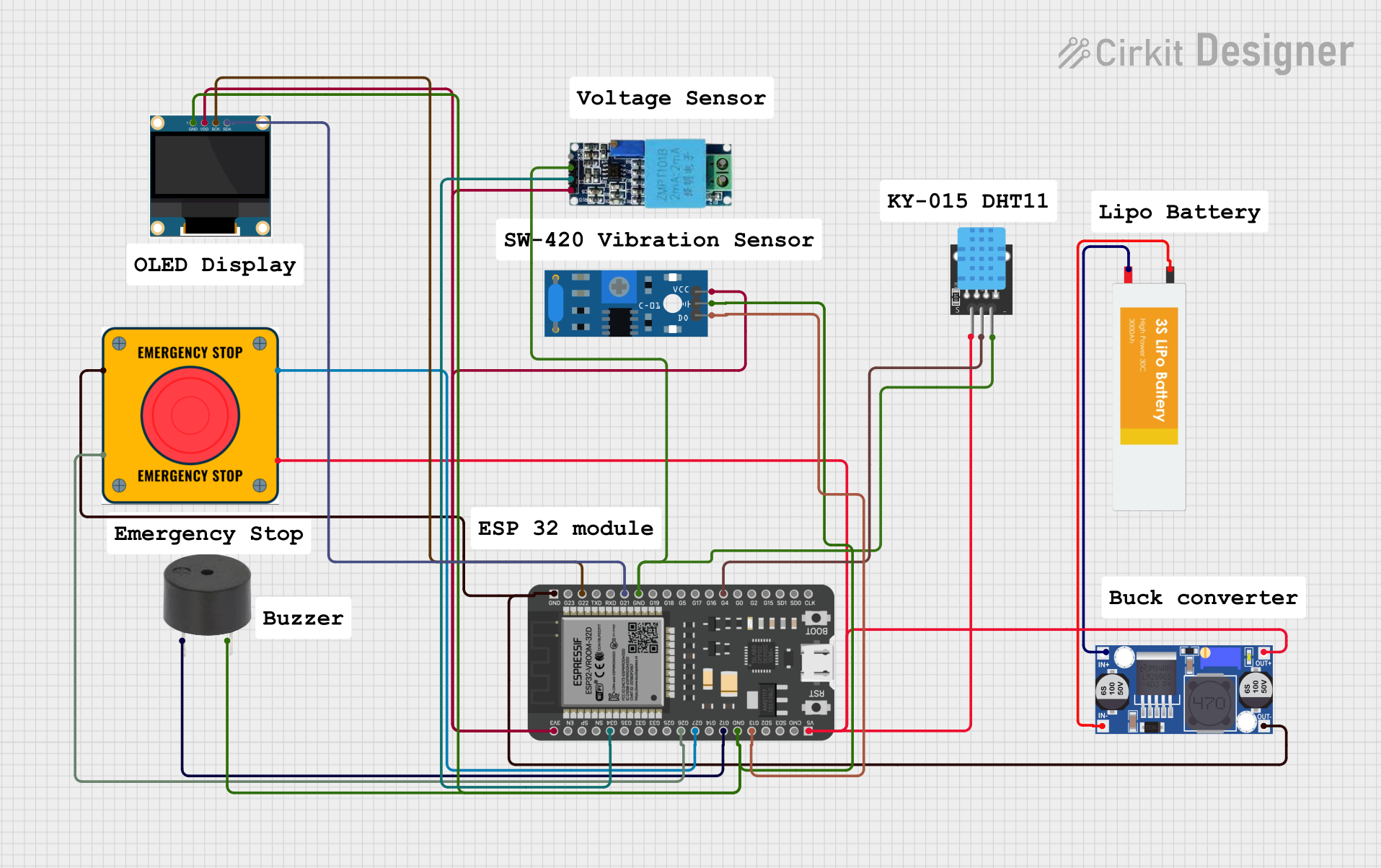
 Open Project in Cirkit Designer
Open Project in Cirkit Designer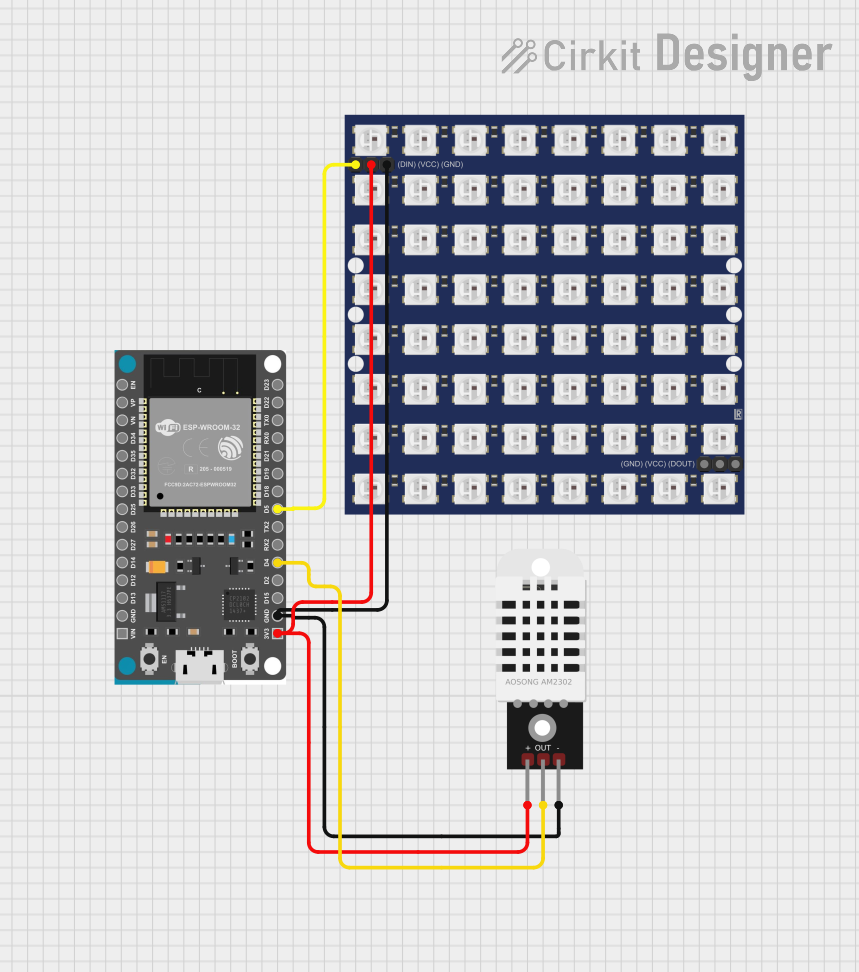
 Open Project in Cirkit Designer
Open Project in Cirkit Designer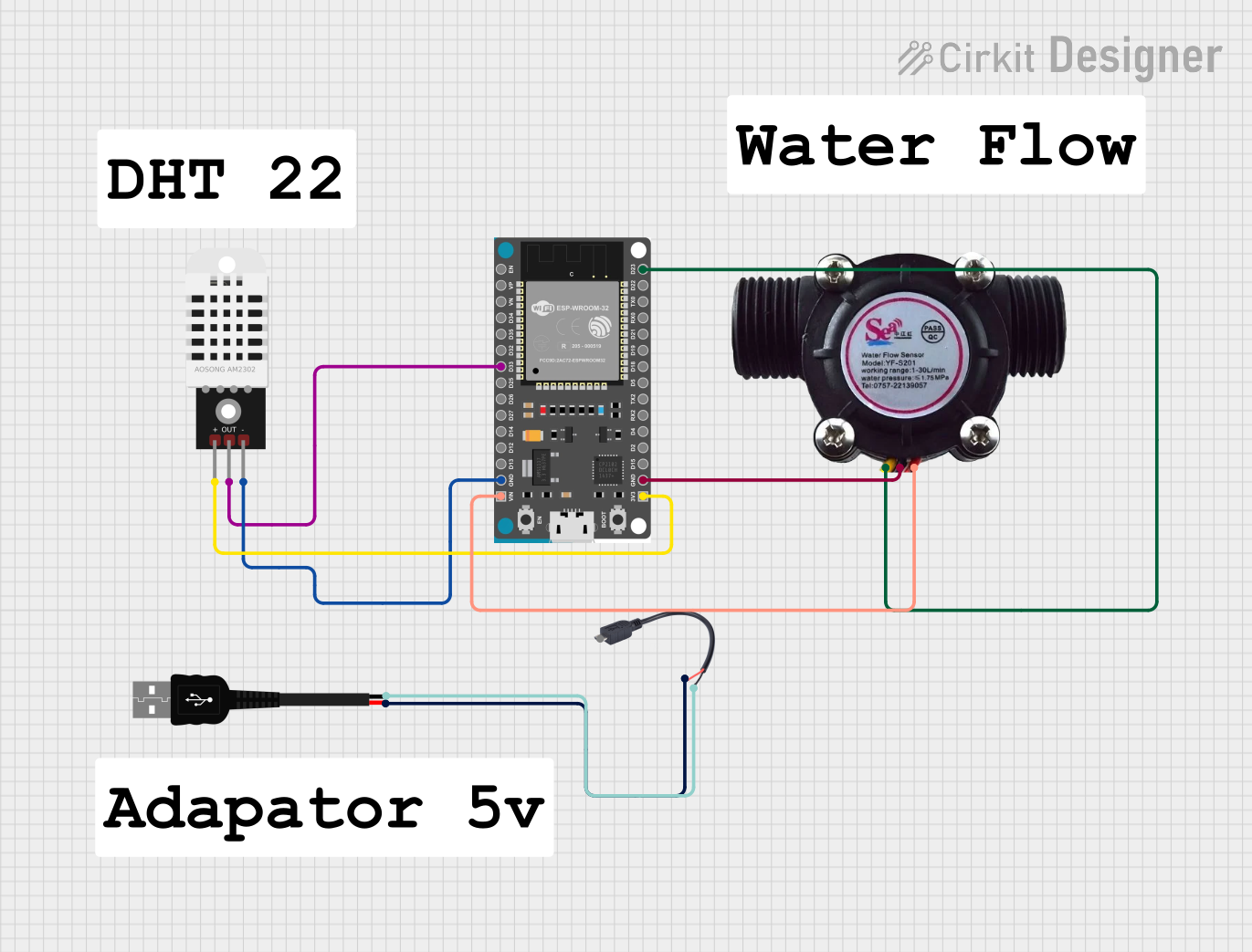
 Open Project in Cirkit Designer
Open Project in Cirkit Designer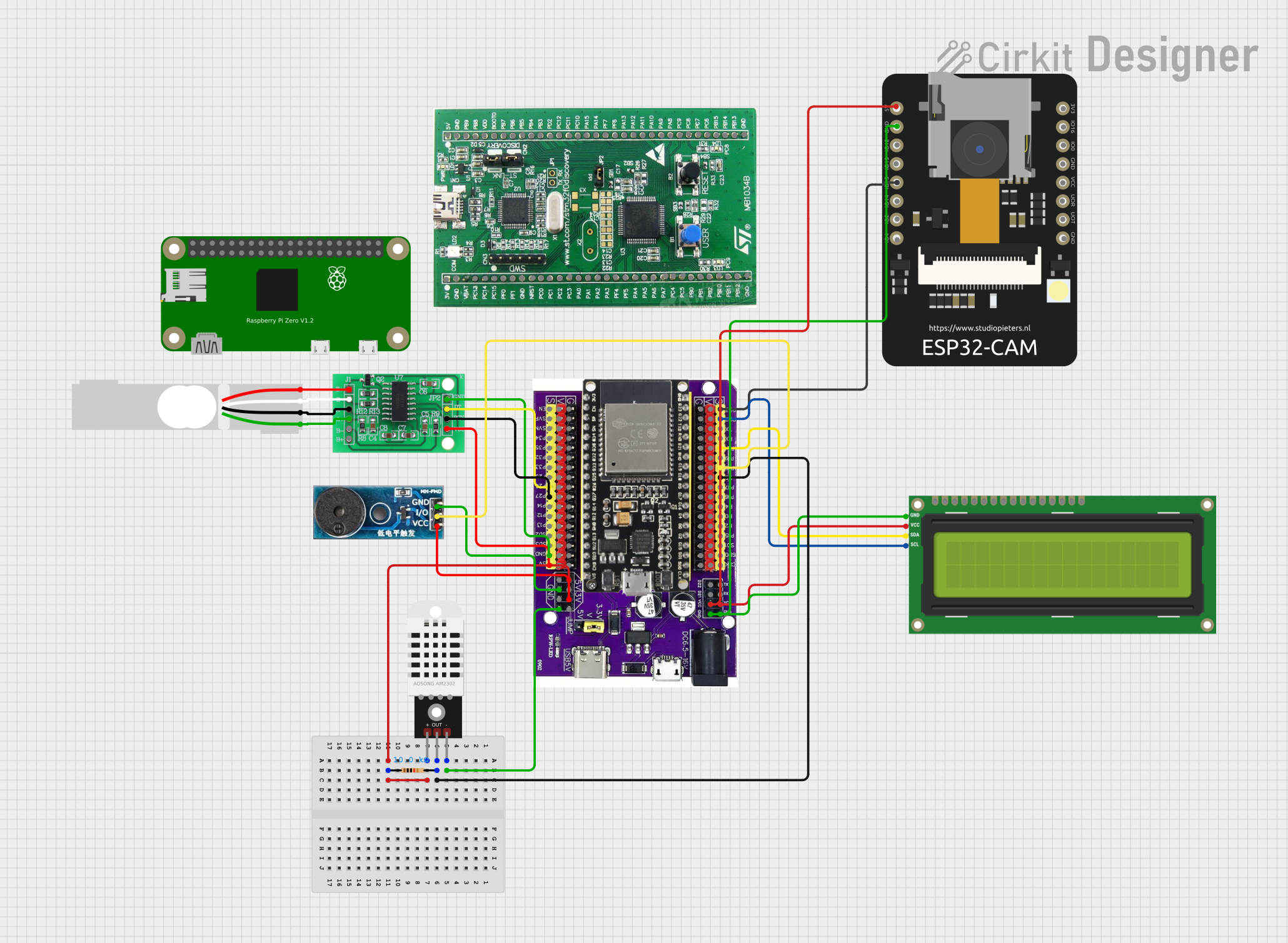
 Open Project in Cirkit Designer
Open Project in Cirkit DesignerExplore Projects Built with ESP32

 Open Project in Cirkit Designer
Open Project in Cirkit Designer
 Open Project in Cirkit Designer
Open Project in Cirkit Designer
 Open Project in Cirkit Designer
Open Project in Cirkit Designer
 Open Project in Cirkit Designer
Open Project in Cirkit DesignerCommon Applications and Use Cases
- IoT devices (e.g., smart home systems, environmental monitoring)
- Wireless communication hubs
- Wearable devices
- Robotics and automation
- Data logging and remote sensing
- Prototyping and development of connected systems
Technical Specifications
The ESP32 is packed with features that make it suitable for a wide range of applications. Below are its key technical specifications:
| Feature | Specification |
|---|---|
| Processor | Dual-core Xtensa® 32-bit LX6 microprocessor, up to 240 MHz |
| Wireless Connectivity | Wi-Fi 802.11 b/g/n, Bluetooth v4.2 BR/EDR and BLE |
| Flash Memory | 4 MB (varies by module) |
| SRAM | 520 KB |
| GPIO Pins | Up to 36 GPIO pins (multiplexed with other functions) |
| Operating Voltage | 3.3V |
| Input Voltage Range | 2.2V to 3.6V |
| Power Consumption | Ultra-low power consumption in deep sleep mode (~10 µA) |
| ADC Channels | 18 (12-bit resolution) |
| DAC Channels | 2 |
| Communication Interfaces | UART, SPI, I2C, I2S, CAN, PWM, SDIO |
| Temperature Range | -40°C to 125°C |
| Package | QFN48 (7x7 mm) |
Pin Configuration and Descriptions
The ESP32 has a flexible pinout, with many pins serving multiple functions. Below is a table of commonly used pins and their descriptions:
| Pin | Function | Description |
|---|---|---|
| GPIO0 | Input/Output, Boot Mode Select | Used for boot mode selection during startup. |
| GPIO2 | Input/Output, ADC, PWM | General-purpose pin, supports ADC and PWM. |
| GPIO4 | Input/Output, ADC, PWM | General-purpose pin, supports ADC and PWM. |
| GPIO5 | Input/Output, ADC, PWM | General-purpose pin, supports ADC and PWM. |
| GPIO12 | Input/Output, ADC, Touch Sensor | Can be used as a touch sensor or ADC input. |
| GPIO13 | Input/Output, ADC, Touch Sensor | Can be used as a touch sensor or ADC input. |
| GPIO15 | Input/Output, ADC, PWM | General-purpose pin, supports ADC and PWM. |
| GPIO16 | Input/Output | General-purpose pin. |
| GPIO17 | Input/Output | General-purpose pin. |
| EN | Enable | Active-high enable pin for the ESP32. |
| 3V3 | Power Supply | Provides 3.3V power to the ESP32. |
| GND | Ground | Ground connection. |
Usage Instructions
How to Use the ESP32 in a Circuit
- Powering the ESP32: The ESP32 operates at 3.3V. Ensure your power supply provides a stable 3.3V. If using a development board, you can power it via USB or a 5V input.
- Connecting GPIO Pins: Use the GPIO pins for input/output operations. Be cautious of the voltage levels, as the ESP32 is not 5V-tolerant.
- Programming the ESP32: The ESP32 can be programmed using the Arduino IDE, Espressif's ESP-IDF, or other compatible environments. Install the necessary drivers and libraries for your chosen platform.
- Wi-Fi and Bluetooth Setup: Use the built-in libraries to configure Wi-Fi and Bluetooth for your application. The ESP32 supports both client and access point modes for Wi-Fi.
Important Considerations and Best Practices
- Voltage Levels: Avoid applying voltages higher than 3.3V to the GPIO pins to prevent damage.
- Deep Sleep Mode: Use deep sleep mode to conserve power in battery-powered applications.
- Pull-up/Pull-down Resistors: Some GPIO pins require external pull-up or pull-down resistors for proper operation.
- Boot Mode: Ensure GPIO0 is pulled low during startup to enter programming mode.
Example Code for Arduino IDE
Below is an example of how to connect the ESP32 to a Wi-Fi network and blink an LED:
#include <WiFi.h> // Include the Wi-Fi library
const char* ssid = "Your_SSID"; // Replace with your Wi-Fi SSID
const char* password = "Your_PASSWORD"; // Replace with your Wi-Fi password
const int ledPin = 2; // GPIO2 is connected to the onboard LED
void setup() {
pinMode(ledPin, OUTPUT); // Set GPIO2 as an output
Serial.begin(115200); // Start the serial communication
Serial.println("Connecting to Wi-Fi...");
WiFi.begin(ssid, password); // Connect to the Wi-Fi network
while (WiFi.status() != WL_CONNECTED) {
delay(1000); // Wait for the connection to establish
Serial.println("Connecting...");
}
Serial.println("Connected to Wi-Fi!");
Serial.print("IP Address: ");
Serial.println(WiFi.localIP()); // Print the device's IP address
}
void loop() {
digitalWrite(ledPin, HIGH); // Turn the LED on
delay(1000); // Wait for 1 second
digitalWrite(ledPin, LOW); // Turn the LED off
delay(1000); // Wait for 1 second
}
Troubleshooting and FAQs
Common Issues and Solutions
ESP32 Not Connecting to Wi-Fi
- Ensure the SSID and password are correct.
- Check if the Wi-Fi network is within range.
- Verify that the router is not blocking the ESP32's MAC address.
GPIO Pins Not Working
- Confirm that the pins are not being used for other functions (e.g., boot mode).
- Check for proper pull-up or pull-down resistors if required.
ESP32 Not Entering Programming Mode
- Ensure GPIO0 is pulled low during startup.
- Verify that the correct COM port and board are selected in the programming environment.
Overheating
- Check for excessive current draw or incorrect power supply voltage.
- Ensure proper ventilation and avoid short circuits.
FAQs
Q: Can the ESP32 operate on 5V?
A: No, the ESP32 operates at 3.3V. However, many development boards include a voltage regulator that allows them to be powered via a 5V input.
Q: How do I reset the ESP32?
A: Press the reset button on the development board or toggle the EN pin.
Q: Can I use the ESP32 with Arduino libraries?
A: Yes, the ESP32 is compatible with many Arduino libraries. Install the ESP32 board package in the Arduino IDE to get started.
Q: What is the maximum range of the ESP32's Wi-Fi?
A: The range depends on environmental factors but typically extends up to 100 meters in open spaces.